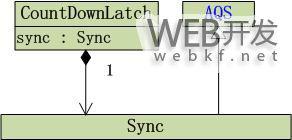python做中学(五)多线程的用法

多线程类似于同时执行多个不同程序,多线程运行有如下优点:
- 使用线程可以把占据长时间的程序中的任务放到后台去处理。
- 用户界面可以更加吸引人,比如用户点击了一个按钮去触发某些事件的处理,可以弹出一个进度条来显示处理的进度。
- 程序的运行速度可能加快。
- 在一些等待的任务实现上如用户输入、文件读写和网络收发数据等,线程就比较有用了。在这种情况下我们可以释放一些珍贵的资源如内存占用等等。
每个独立的线程有一个程序运行的入口、顺序执行序列和程序的出口。但是线程不能够独立执行,必须依存在应用程序中,由应用程序提供多个线程执行控制。
每个线程都有他自己的一组CPU寄存器,称为线程的上下文,该上下文反映了线程上次运行该线程的CPU寄存器的状态。
指令指针和堆栈指针寄存器是线程上下文中两个最重要的寄存器,线程总是在进程得到上下文中运行的,这些地址都用于标志拥有线程的进程地址空间中的内存。
- 线程可以被抢占(中断)。
- 在其他线程正在运行时,线程可以暂时搁置(也称为睡眠) -- 这就是线程的退让。
线程可以分为:
内核线程:由操作系统内核创建和撤销。
用户线程:不需要内核支持而在用户程序中实现的线程。
Python3 线程中常用的两个模块为:
- _thread
- threading(推荐使用)
thread 模块已被废弃。用户可以使用 threading 模块代替。所以,在 Python3 中不能再使用"thread" 模块。为了兼容性,Python3 将 thread 重命名为 "_thread"。
threading 模块除了包含 _thread 模块中的所有方法外,还提供的其他方法:
- threading.currentThread(): 返回当前的线程变量。
- threading.enumerate(): 返回一个包含正在运行的线程的list。正在运行指线程启动后、结束前,不包括启动前和终止后的线程。
- threading.activeCount(): 返回正在运行的线程数量,与len(threading.enumerate())有相同的结果。
除了使用方法外,线程模块同样提供了Thread类来处理线程,Thread类提供了以下方法:
run(): 用以表示线程活动的方法。
start():启动线程活动。
join([time]): 等待至线程中止。这阻塞调用线程直至线程的join() 方法被调用中止-正常退出或者抛出未处理的异常-或者是可选的超时发生。
isAlive(): 返回线程是否活动的。
getName(): 返回线程名。
setName(): 设置线程名。
举个例子:
1 #!/usr/bin/python32 # 3birds coypright
3
4 import threading
5 import time
6
7 exitFlag = 0
8
9 class myThread (threading.Thread):
10 def __init__(self, threadID, name, counter):
11 threading.Thread.__init__(self)
12 self.threadIN = threadID
13 self.name = name
14 self.counter = counter
15 def run(self):
16 print ("3birds start thread:" + self.name)
17 threadLock.acquire()
18 print_time(self.name, self.counter, 5)
19 threadLock.release()
20 print ("3birds exit thread:" + self.name)
21
22 def print_time(threadName, delay, counter):
23 while counter:
24 if exitFlag:
25 threadName.exit()
26 time.sleep(delay)
27 print ("%s: %s" % (threadName, time.ctime(time.time())))
28 counter -= 1
29
30 threadLock = threading.Lock()
31 threads = []
32
33 thread1 = myThread(1, "Thread-1", 1)
34 thread2 = myThread(2, "Thread-2", 2)
35
36 # start new thread
37 thread1.start()
38 thread2.start()
39 thread1.join()
40 thread2.join()
41 print("end the thread")
运行结果:
3birds start thread:Thread-13birds start thread:Thread-2
Thread-1: Tue Jul 23 09:08:46 2019
Thread-1: Tue Jul 23 09:08:47 2019
Thread-1: Tue Jul 23 09:08:48 2019
Thread-1: Tue Jul 23 09:08:49 2019
Thread-1: Tue Jul 23 09:08:50 2019
3birds exit thread:Thread-1
Thread-2: Tue Jul 23 09:08:52 2019
Thread-2: Tue Jul 23 09:08:54 2019
Thread-2: Tue Jul 23 09:08:56 2019
Thread-2: Tue Jul 23 09:08:58 2019
Thread-2: Tue Jul 23 09:09:00 2019
3birds exit thread:Thread-2
end the thread
参考文档:
1 http://www.runoob.com/python3/python3-multithreading.html
以上是 python做中学(五)多线程的用法 的全部内容, 来源链接: utcz.com/z/386878.html



